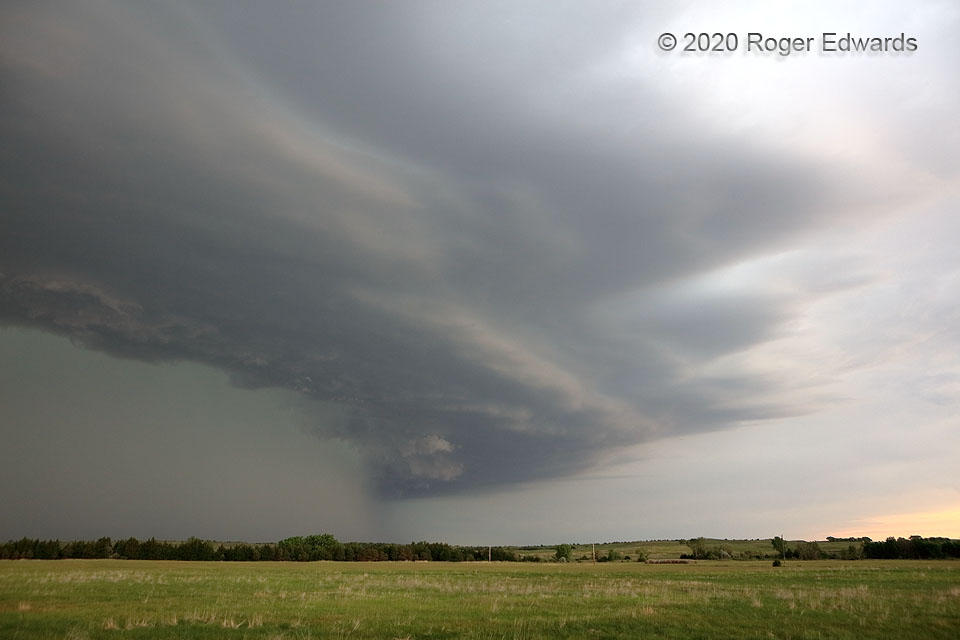 With some upscale growth internally, some cell mergers, and a shift into an environment of stronger low-level moisture and shear, a previously poorly organized, high-based, outflow-dominant multicell cluster gradually became a heavy-precipitation supercell. The spiky formations at upper right probably are related to Kelvin-Helmholtz instability, a well-known aspect of fluid dynamics where regularly spaced waves form amidst velocity shear in a fluid layer. A couple days later and a couple hundred miles away, I would find an even more-spectacular supercell with K-H waves, on a similarly positioned cloud deck.
2 ESE Almeria NE (3 Jun 20) Looking NE
41.8175, -99.4949
With some upscale growth internally, some cell mergers, and a shift into an environment of stronger low-level moisture and shear, a previously poorly organized, high-based, outflow-dominant multicell cluster gradually became a heavy-precipitation supercell. The spiky formations at upper right probably are related to Kelvin-Helmholtz instability, a well-known aspect of fluid dynamics where regularly spaced waves form amidst velocity shear in a fluid layer. A couple days later and a couple hundred miles away, I would find an even more-spectacular supercell with K-H waves, on a similarly positioned cloud deck.
2 ESE Almeria NE (3 Jun 20) Looking NE
41.8175, -99.4949
Spiky Deck
 With some upscale growth internally, some cell mergers, and a shift into an environment of stronger low-level moisture and shear, a previously poorly organized, high-based, outflow-dominant multicell cluster gradually became a heavy-precipitation supercell. The spiky formations at upper right probably are related to Kelvin-Helmholtz instability, a well-known aspect of fluid dynamics where regularly spaced waves form amidst velocity shear in a fluid layer. A couple days later and a couple hundred miles away, I would find an even more-spectacular supercell with K-H waves, on a similarly positioned cloud deck.
2 ESE Almeria NE (3 Jun 20) Looking NE
41.8175, -99.4949
With some upscale growth internally, some cell mergers, and a shift into an environment of stronger low-level moisture and shear, a previously poorly organized, high-based, outflow-dominant multicell cluster gradually became a heavy-precipitation supercell. The spiky formations at upper right probably are related to Kelvin-Helmholtz instability, a well-known aspect of fluid dynamics where regularly spaced waves form amidst velocity shear in a fluid layer. A couple days later and a couple hundred miles away, I would find an even more-spectacular supercell with K-H waves, on a similarly positioned cloud deck.
2 ESE Almeria NE (3 Jun 20) Looking NE
41.8175, -99.4949